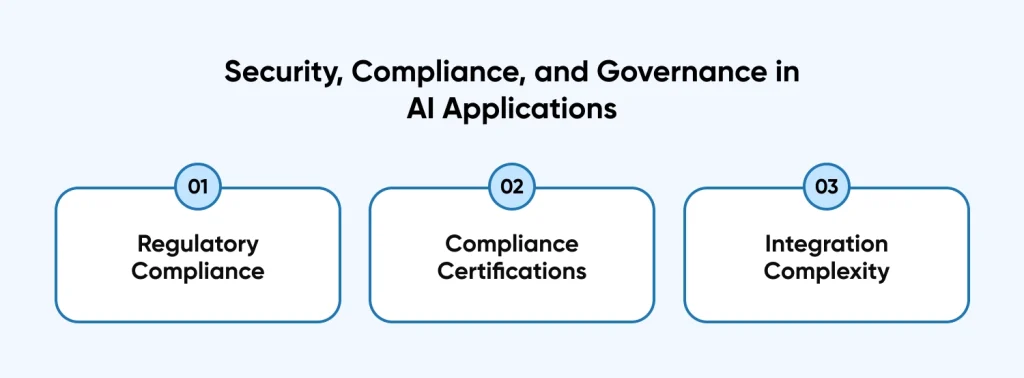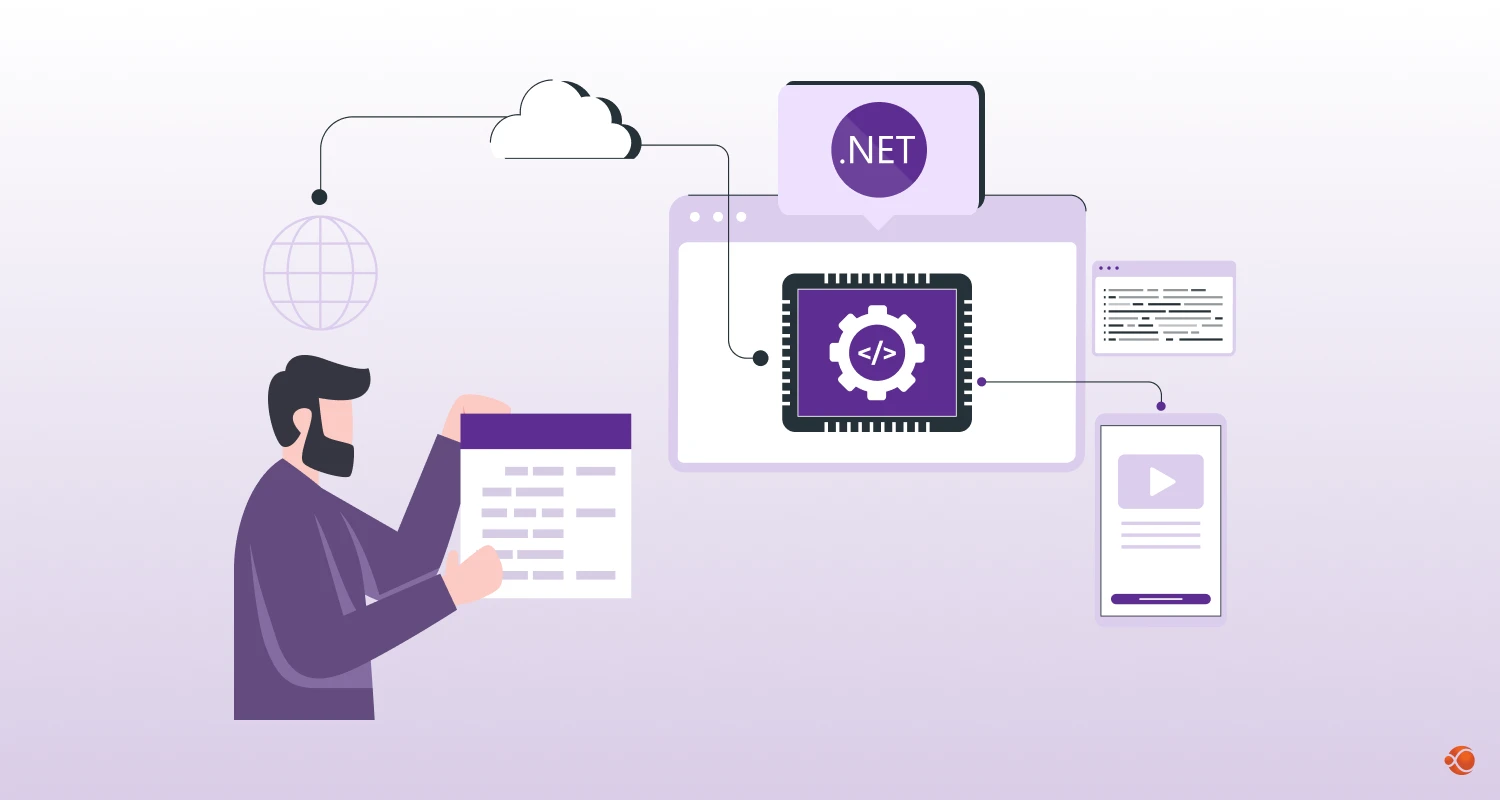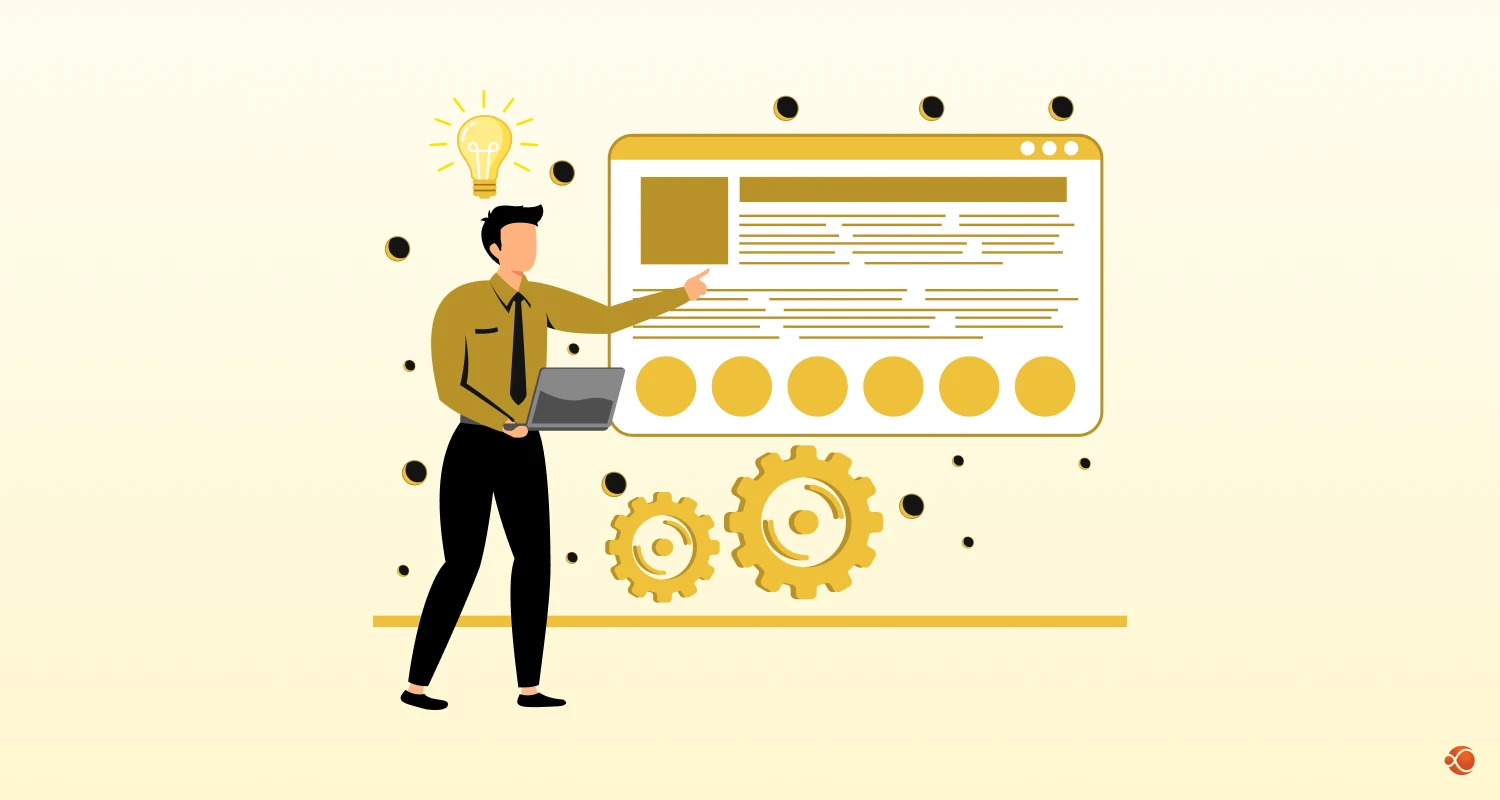The artificial intelligence revolution is reshaping software development entirely. Most successful AI projects share one key trait: they combine robust development frameworks with scalable cloud infrastructure.
That’s where developing AI applications with .NET and Azure becomes a game-changer. Microsoft’s ecosystem offers enterprise-grade reliability while maintaining developer flexibility. This combination creates an environment where AI concepts actually become deployable solutions.
This guide walks you through the complete journey. From initial planning to production deployment, we’ll explore how AI software development services leverage this powerful ecosystem. Let’s dive into why .NET and Azure AI represent the future of intelligent application development.
What Makes .NET AI Framework Ideal for Machine Learning Applications?
The .NET ecosystem has evolved far beyond traditional web development. Today’s .NET AI framework addresses the complex demands of modern machine learning applications. With 83% of organizations having adopted machine learning technologies in some capacity, the demand for unified development platforms has never been higher.
Core Advantages of Machine Learning with .NET
Think about it this way: traditional AI development often feels fragmented. You’ve got data scientists working in Python, backend developers in Java, and frontend teams in JavaScript. The result? Integration nightmares and deployment headaches. .NET changes this equation fundamentally.
With ML.NET, Microsoft created a unified platform for machine learning with .NET. Developers can build, train, and deploy models without leaving their familiar environment. No more context switching between languages and frameworks.
How Does .NET Integrate with Azure AI Services?
The integration story gets even better with Azure. Azure AI services plug directly into your .NET applications through native SDKs. This means cognitive services, custom vision, and language understanding work seamlessly with your existing codebase.
Here’s what makes this approach powerful:
Unified Development Experience: Your team works with familiar tools and patterns. No need to hire AI developers with completely different skill sets. Your existing asp.net development services team can expand into AI functionality.
Enterprise-Grade Security: Built-in authentication, authorization, and compliance features. Your AI applications inherit the same security standards as your other enterprise systems.
Understanding AI Application Architecture Patterns in .NET
Performance at Scale: .NET’s performance characteristics shine in AI workloads. Memory management, threading, and optimization tools handle complex machine learning operations efficiently.
Seamless Cloud Integration: Azure services integrate natively with .NET applications. This creates a smooth path from development to production deployment.
When Should You Hire ASP.NET Developers vs. AI Specialists?
The question isn’t whether .NET can handle AI workloads anymore. It’s whether your organization is ready to leverage this competitive advantage.
Your existing development team can handle most AI integration scenarios. hire asp.net developers when you need to expand current applications with AI features.
How to Plan Your AI Application Architecture with Azure Machine Learning?
Building ai-driven enterprise apps using Azure starts with a solid architectural planning. Too many organizations jump straight into model development without considering the bigger picture.
What are the Key Considerations for AI Project Planning?
I’ve seen brilliant AI models fail because nobody thought about deployment. Others succeed technically but crumble under real-world usage patterns. AI application architecture requires a different mindset than traditional software design.
Start with your data strategy. Where does your training data live? How will you handle real-time inference requests? These decisions shape everything that follows.
Which Azure AI Services Fit Your Development Needs?
Azure machine learning services offer multiple paths forward. You can use pre-built cognitive services for common scenarios. Or build custom models when your needs require unique approaches.
Consider these architectural patterns:
Microservices-Based AI: Break AI functionality into small, manageable services. Each service handles specific AI tasks. This approach scales well and allows independent deployment cycles.
Event-Driven Architecture: Use Azure Service Bus or Event Grid to trigger AI processing. This pattern works well for batch processing and asynchronous workflows.
How to Design Scalable, Cloud-First AI Solutions?
Serverless AI Processing: Build a serverless web app in azure that is able to handle AI requests on-demand. This is ideal for handling dynamic workload and ensuring cost optimization.
Hybrid Cloud Deployment: Keep sensitive data on-premises while leveraging Azure’s AI processing power. Using local AI and cloud AI in tandem helps keep sensitive information protected, while allowing the application to benefit from other AI integrations and services, addressing the compliance concerns, while maintaining the cloud benefits.
Cost Optimization Strategies for Azure-Based AI Applications
Cost optimization starts during planning, not after deployment. Azure provides detailed pricing calculators for AI services. Use them to model different architectural approaches before committing to implementation.
The key is matching your architecture to your organization’s specific needs. Generic AI solutions rarely survive contact with real business requirements.
Building AI Applications: What Development Approaches Work Best?
The development phase is where architectural plans meet practical reality. Having worked with numerous development teams, I’ve learned that approach matters more than raw technical skill.
How to Set Up Your Development Environment for AI with .NET?
Setting up your development environment correctly saves countless hours later. Start with the latest .NET SDK and Azure CLI tools. Configure your development workspace for seamless cloud integration from day one.
Create a dedicated resource group for your AI experiments. This keeps costs transparent and resources organized. Install the Azure Machine Learning SDK for .NET to enable seamless model management.
What is ML.NET and How Does It Accelerate AI Development Lifecycle?
ML.NET deserves special attention in your toolkit. This framework brings machine learning capabilities directly into the .NET ecosystem. You’re not calling external services or managing separate ML pipelines. Everything runs within your application’s context.
Here’s how to approach ML.NET integration effectively:
- Start Simple: Begin with pre-trained models for common scenarios. Classification, regression, and clustering tasks often have ready-made solutions.
- Progress Gradually: Move to custom model training as your requirements become more specific. ML.NET’s AutoML capabilities can accelerate this transition.
- Focus on Data Quality: The best algorithms can’t overcome poor data. Invest time in data cleaning and feature engineering.
Integrating Azure Cognitive Services in Your .NET Applications
Azure Cognitive Services integration opens another development path. These services handle complex AI tasks through simple API calls. With dedicated azure AI services, you can integrate all sorts of emerging AI techniques like natural language processing, computer vision, and speech recognition like plug-and-play components.
The beauty lies in the simplicity. Add a NuGet package, configure your API keys, and start making intelligent applications. No PhD in machine learning required.
Best Practices for AI Software Development Services Workflow
Language processing capabilities deserve particular attention. Modern applications increasingly need to understand and generate human language. Azure’s language services provide pre-built models for sentiment analysis, entity recognition, and content generation.
Version control becomes crucial for AI applications. Your models change as frequently as your code. Use Azure DevOps or GitHub to track both code and model versions systematically.
Language Processing and Computer Vision Implementation Strategies
Computer vision features transform how applications interact with visual content. You can integrate AI capabilities such as object detection, image classification, and optical character recognition directly via API calls.
The development process becomes iterative rather than waterfall-based. Deploy early versions quickly. Gather feedback from real usage patterns. Refine and improve based on actual performance data.
Microsoft development services provide proper documentation and samples. Leverage these resources to accelerate your development timeline.
Deploying AI Models on Azure: From Development to Production
Deployment separates successful AI projects from expensive experiments. I’ve watched too many organizations build impressive demos that never reach production users.
What Are Your AI Model Deployment Options on Azure?
AI model deployment on Azure offers multiple pathways. The choice depends on your performance requirements, cost constraints, and operational capabilities.
Container-based deployment provides the most flexibility. Package your AI models and dependencies into Docker containers. Deploy these containers using Azure Container Instances or Azure Kubernetes Service.
This approach offers several advantages:
- Consistent Environments: Your model runs identically across development, testing, and production environments.
- Scalability Control: Scale individual AI services based on demand patterns rather than scaling entire applications.
- Technology Flexibility: Mix different AI frameworks and languages within your overall solution architecture.

Building an AI-Powered Document Analyzer: How to use .NET and Azure for AI Applications Development
Let’s look at a sample .NET Azure Powered AI document analyzer to see how we can integrate the two technologies to create powerful and practical applications.
The project aims to create a console app that combines:
- Text extraction (Azure Document Intelligence)
- Sentiment analysis (ML.NET custom model)
- GPT-4o summarization (Azure OpenAI)
bash
DocumentAnalyzer/
├── Data/
│ ├── training-data.csv # Sentiment training data
│ └── documents/ # Sample PDFs
├── Models/
│ └── SentimentData.cs # ML.NET model class
├── Program.cs # Main logic
└── DocumentAnalyzer.csproj1. Configuration Setup
appsettings.json
json
{ "Azure": { "Endpoint": "https://<your-resource>.openai.azure.com/", "ApiKey": "<your-key>", "DeploymentName": "gpt-4o-turbo"
}
}Explanation: Centralizes configuration for secure access. Use dotnet user-secrets for production.
2. Core Implementation
csharp
using Azure;
using Azure.AI.OpenAI;
using Azure.AI.DocumentIntelligence;
using Microsoft.ML;
public class DocumentAnalysisResult
{ public string ExtractedText { get; set; } public float SentimentScore { get; set; } public string Summary { get; set; }
}
public class DocumentAnalyzer
{ private readonly OpenAIClient _openAIClient; private readonly DocumentIntelligenceClient _docClient; private readonly PredictionEngine<SentimentData, SentimentPrediction> _sentimentModel; public DocumentAnalyzer(string endpoint, string apiKey)
{ // Initialize clients with Azure credentials
_openAIClient = new OpenAIClient( new Uri(endpoint), new AzureKeyCredential(apiKey));
_docClient = new DocumentIntelligenceClient( new Uri(endpoint), new AzureKeyCredential(apiKey)); // Load ML.NET model var mlContext = new MLContext(); var trainedModel = mlContext.Model.Load("sentiment-model.zip", out _);
_sentimentModel = mlContext.Model.CreatePredictionEngine<SentimentData, SentimentPrediction>(trainedModel);
} public async Task<DocumentAnalysisResult> AnalyzeDocument(string filePath)
{ // Step 1: Extract text using Azure Document Intelligence var extractResult = await ExtractText(filePath); // Step 2: Analyze sentiment with custom ML model var sentiment = AnalyzeSentiment(extractResult); // Step 3: Generate summary with GPT-4o var summary = await GenerateSummary(extractResult); return new DocumentAnalysisResult {
ExtractedText = extractResult,
SentimentScore = sentiment,
Summary = summary
};
} private async Task<string> ExtractText(string filePath)
{ using var stream = File.OpenRead(filePath); var operation = await _docClient.AnalyzeDocumentAsync(
WaitUntil.Completed, "prebuilt-read",
stream); return operation.Value.Content;
} private float AnalyzeSentiment(string text)
{ var input = new SentimentData { Text = text }; var prediction = _sentimentModel.Predict(input); return prediction.Probability;
} private async Task<string> GenerateSummary(string text)
{ var options = new ChatCompletionsOptions
{
DeploymentName = _deploymentName,
Messages = { new ChatMessage(ChatRole.System, "Summarize in 3 bullet points:"), new ChatMessage(ChatRole.User, text)
},
MaxTokens = 300
}; var response = await _openAIClient.GetChatCompletionsAsync(options); return response.Value.Choices[0].Message.Content;
}
}3. Usage Example
csharp
var analyzer = new DocumentAnalyzer(
config["Azure:Endpoint"],
config["Azure:ApiKey"]);
var result = await analyzer.AnalyzeDocument("Data/documents/report.pdf");
Console.WriteLine($"Extracted Text: {result.ExtractedText[..100]}...");
Console.WriteLine($"Sentiment Score: {result.SentimentScore:P0}");
Console.WriteLine($"AI Summary:\n{result.Summary}");Key Components Explained
- Document Intelligence Client:
- Uses OCR to extract text from PDFs/images
- Supports invoices, forms, and handwritten text
- prebuilt-read model handles diverse layouts
- ML.NET Sentiment Analysis:
- Custom model trained on domain-specific data
- PredictionEngine provides real-time scoring
- Retrain with MLContext when data changes
- OpenAI Integration:
- GPT-4o handles complex summarization
- Configurable temperature/max tokens
- Supports chat completion streaming
Validation & Testing
csharp
// Unit Test Example (xUnit)
[Fact]
public async Task AnalyzeDocument_ValidPDF_ReturnsAllSections()
{ var analyzer = CreateTestAnalyzer(); var result = await analyzer.AnalyzeDocument("valid.pdf");
Assert.NotNull(result.ExtractedText);
Assert.InRange(result.SentimentScore, 0, 1);
Assert.Contains("•", result.Summary); // Check bullet points
}Deployment Pipeline
text
# Azure DevOps Pipeline
steps:
- task: DotNetCoreCLI@2 inputs: command: publish arguments: '-c Release -o $(Build.ArtifactStagingDirectory)'
- task: AzureWebApp@1 inputs:
appType: 'webApp'
azureSubscription: '$(AzureServiceConnection)'
appName: 'document-analyzer'
package: '$(Build.ArtifactStagingDirectory)/*.zip'Enhanced Security
csharp
// Azure Key Vault Integration
var secretClient = new SecretClient( new Uri("https://<vault-name>.vault.azure.net/"), new DefaultAzureCredential());
var apiKey = secretClient.GetSecret("OpenAI-Key").Value.Value;Best Practice: Never store credentials in code – use Managed Identities
This implementation combines multiple Azure AI services with .NET’s native capabilities. The complete project is available on GitHub with:
- Pre-trained model samples
- CI/CD pipelines
- Load testing scripts
- Azure Resource Manager (ARM) templates
For production use:
- Add retry policies using Polly
- Enable caching for frequent documents
- Implement Application Insights telemetry
Container-Based Deployment vs. Azure App Service: Which to Choose?
The way you deploy AI models on Azure needs to match the application requirements.Let’s look at some of the top factors to consider when choosing between container-based and Azure App service deployment options:
- Latency Requirements: Real-time applications need different deployment strategies than batch processing systems.
- Data Locality: Keep AI processing close to your data sources to minimize transfer costs and latency.
- Compliance Needs: Some industries require specific geographic deployment regions or data residency requirements.
Choose containers when you need maximum control over the runtime environment. Pick App Service when you want Microsoft to handle infrastructure management.
Monitoring, Scaling, and Maintaining Deployed AI Solutions
Monitoring becomes critical post-deployment. Azure Application Insights provides detailed telemetry for AI applications. Track model performance, response times, and error rates through comprehensive dashboards.
Set up alerts for model drift detection. AI models degrade over time as real-world data patterns change. Early detection prevents performance issues from impacting users.
Continuous deployment enables rapid iteration on AI models. Set up pipelines that retrain models automatically as new data becomes available. Deploy improved versions without manual intervention.
The goal isn’t just getting AI models into production. It’s creating sustainable systems that improve over time through automated processes.
What Should Enterprises Consider When Building AI-Driven Apps?
Enterprise AI development carries unique challenges that don’t exist in smaller projects. Scale, compliance, and integration complexity multiply exponentially as organizations grow.
How Do Microsoft Development Services Support Enterprise AI Goals?
Security considerations top the enterprise priority list. AI applications often process sensitive data and make business-critical decisions. You need to hire ASP.NET developers that know how to make traditional security approaches, more AI-specific risks ready. Microsoft Azure Active Directory Service enables teams to integrate enterprise-grade Identity Management Solutions. With help of professional ASP.NET development services, you can easily integrate the management solutions with your AI applications.
Consider these enterprise-specific factors:
- Data Governance: Set up clear and concise policies for AI training data Figure out: Who can access what data? How long is data retained? These questions become critical at enterprise scale.
- Model Bias and Fairness: AI models if not trained well, can introduce new or amplify existing biases. Enterprise applications need robust testing and monitoring for discriminatory outcomes.
Security, Compliance, and Governance in AI Applications

Regulatory Compliance: Healthcare and fintech sectors have specific AI compliance requirements. Build AI applications with these considerations into your development process from the beginning.
Compliance Certifications: Azure provides compliance certifications for major standards including HIPAA, SOC 2, and ISO 27001. Your AI applications inherit these compliance benefits when deployed properly.
Integration Complexity: Enterprise AI applications will require seamless integration with other business applications and processes. You need to make sure they can integrate with existing systems, workflows, and databases.
Performance Optimization and Resource Management
Performance optimization at enterprise scale requires different approaches. What works for hundreds of users often breaks down at thousands or millions of users. Design for scale from the beginning rather than retrofitting later.
Use Azure’s autoscaling capabilities to handle variable loads automatically. Configure scaling rules based on CPU usage, memory consumption, or custom metrics like prediction request volume.
When to Leverage External AI Development Expertise?
Deciding when to hire ASP.NET developers versus bringing in AI specialists depends on your project complexity. Simple AI integrations using pre-built services work well with existing .NET teams. Complex custom model development might require specialized expertise.
Microsoft development services provide enterprise-grade support options. These services can close the gap between your internal capabilities and project requirements.
Cost management becomes crucial as AI usage scales. Monitor and optimize resource consumption continuously. Azure provides detailed cost analysis tools specifically for AI workloads.
The enterprise AI journey requires patience and strategic thinking. Quick wins build momentum, but sustainable success comes from systematic capability building.
Future-Proofing Your AI Applications: What’s Next for .NET and Azure AI?
The AI landscape evolves rapidly, and yesterday’s cutting-edge technology becomes tomorrow’s baseline expectation. Smart organizations build applications that can adapt to emerging capabilities.
Emerging Trends in .NET AI Development
Emerging trends in .NET AI applications development point toward greater integration and simplified deployment. Microsoft continues investing heavily in developer productivity tools for AI applications.
Edge computing integration represents a significant opportunity. Running AI models directly on user devices or edge locations reduces latency and improves privacy. .NET’s cross-platform capabilities position it well for edge AI scenarios.
The upcoming .NET releases promise even tighter integration with AI frameworks. Expect native support for popular machine learning libraries and improved performance for AI-specific workloads.
How to Prepare for Evolving Azure AI Capabilities?
AutoML capabilities continue expanding within the Azure ecosystem. These tools democratize AI applications development by automating complex model selection and tuning processes. Expect this trend to accelerate.
Preparing for evolving Azure AI capabilities means building flexible architectures. Avoid tight coupling to specific AI services. Design abstraction layers that allow easy swapping of underlying AI providers.
Generative AI integration will be a standard practice for business applications.
Continuous Improvement Strategies for AI Applications
Continuous learning systems will become standard expectations. Self-improving applications will leverage user interaction and patterns, potentially replacing the traditional static solutions.
Implement feedback loops in your AI applications now. Collect user interactions, preferences, and outcomes. This data can be used for refining model improvements and feature development. Focus on fundamentals and don’t chase every new feature that is rolled out. The basis of a robust and scalable AI application is solid architecture, clean code, and development best practices, while adapting new technological changes strategically.
Final Words
Developing AI with .NET and Azure offers a compelling path forward for organizations serious about intelligent software.
The combination provides enterprise-grade reliability with developer-friendly tools. This balance enables teams to build AI solutions that actually reach production and deliver business value.
FAQs on .NET and Azure Integration for AI Application Development
What Are the Best Practices for Creating AI Applications with .Net?
Focus on clean, quality data first – garbage in, garbage out applies especially to AI. Use dependency injection for your AI services, implement proper error handling with fallback mechanisms, and always version control both your code and models together. Test extensively with real-world data before going live.
Can AI Applications Built with .NET be Scaled on Azure?
Yes, Azure makes scaling .NET AI apps straightforward through App Services, Azure Functions, and Container Services. You can handle everything from small startups to enterprise-level traffic with auto-scaling features. The platform automatically adjusts resources based on demand, so you only pay for what you use.
How Does the Integration of .NET with Azure Benefit AI Developers?
The integration is seamless – you get native SDKs, unified authentication, and can deploy with familiar tools. Your existing .NET development team can add AI features without learning entirely new frameworks. Plus, you inherit Azure’s enterprise-grade security and compliance features automatically.
What are Some Common Challenges in AI Development with .NET and Azure?
Cost management can be tricky as AI services scale up quickly with usage. Monitoring model performance and handling API rate limits requires careful planning. Debugging AI predictions isn’t as straightforward as traditional code, and keeping models updated with fresh data needs ongoing attention.







